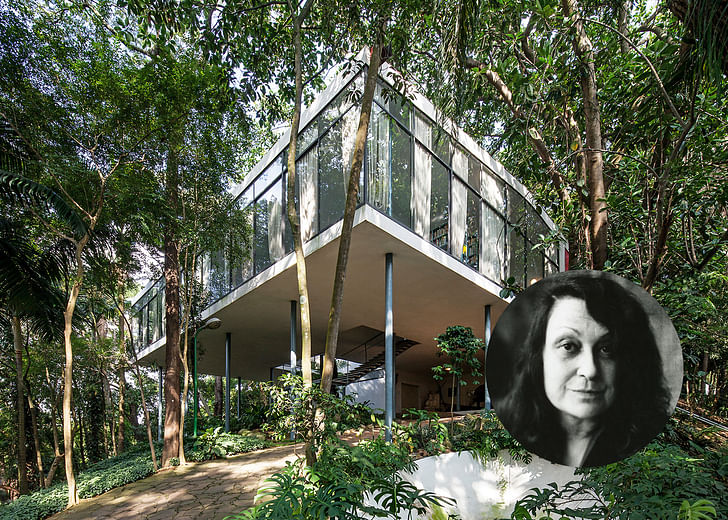

From the Ground Up is a series on Archinect focused on discovering the early stages & signs of history's most prolific architects. Starting from the beginning allows us to understand the long journey architecture takes in even the formative of hands and often, surprising shifts that occur in its journey. These early projects grant us a glimpse into the early, naive, ambitious and at points rough edges of soon to be architectural masters.
Architecture and nature, the house in the landscape; Architettura e natura, la casa nel paesaggio. Looking for a living architecture; Alla ricerca di una architettura vivente. Interior arrangement; Sistemazione degli interni. Three titles for articles written in the 1940’s for Domus seemed to function as a precursor to Lina Bo Bardi’s first built work. [1]In the decade before this, Archillina Bo completed her studies at the University of Rome and moved to Milan in 1939. Here, she freelanced and collaborated with Carlo Pagani, a pupil of Gio Ponti. [2] She wrote for Lo Stile and later became deputy editor of Domus in 1944 at the age of thirty. After the war and fall of Fascist Italy in 1946, Bo married writer, collector and curator Pietro Maria Bardi and moved to Brazil.
These opposing types of construction, appear to ideologically enforce the domestic hierarchy of living. Bo Bardi attempts to solve this friction by gently sloping the roof to capture both enclosed space and courtyards beneath.
A body of work and career had been established before her first built work, as a writer, curator, furniture and set designer. Completed in 1951, Casa de Vidro or Glass House, the home of Lina Bo Bardi and Pietro Maria Bardi, rests on a sloped site in the now affluent Morumbi neighborhood of São Paulo. Originally the first house in the area, the volume is hidden in the remnants of the Mata Atlantica rainforest. As if the appropriate setting to realize her pervious thoughts, a house in the landscape tests a new Modernist Latin American hand. The house’s elements fall freely and exposed on the ground floor. The stair, pilotis, and slab – clear lessons from Domino House – set up the rules at play. The main living space is raised above the ground by pilotis, leaving the exposed stairs to mark the plane below, as if establishing a Piano Nobile. To true Modernist ideals, the concrete slabs are separated by inset windows. As the second layer of assembly is formed through offset columns. The interior space is defined by the two courtyards that cut through the house in plan and section. The remaining half of the house is anchored on its opposing end by the domestic service space embedded into the sloped grade. The house is fragmented between the free plan and the closed-off service quarters. These opposing types of construction, appear to ideologically enforce the domestic hierarchy of living. Bo Bardi attempts to solve this friction by gently sloping the roof to capture both enclosed space and courtyards beneath.
It is in Bo Bardi’s hand sketches where the house begins to break from its Modernist form; as if it is a blank backdrop only there to support a view of the landscape and a case for life’s artifacts. Furniture, curtains, and vegetation are drawn as third, fourth, fifth layers of architecture and establish a preoccupation with a way of living in addition and equal to a way of building. An intention of the seamlessness between these thresholds from the interior, reaching past the façade, and inscribing the exterior environment within the plan can be seen in Bo Bardi’s future work as well. Here she beings to realize her previous writings on paper into form.
[1] Abascal, I. M. (2012, September 18). Art in the house of glass. Retrieved from https://www.domusweb.it/en/art/2012/09/18/art-in-the-house-of-glass.html.
[2] Lima, Zeuler Rocha Mello De Almeida., and Bergdoll, Barry. Lina Bo Bardi. New Haven: Yale University Press, 2013.
Daniela Leon is an editor of PAX, a publication about present day cities and past architects.
1 Comment
Her work looks lovely in the Brazilian jungle. Very much a tropical style.
Block this user
Are you sure you want to block this user and hide all related comments throughout the site?
Archinect
This is your first comment on Archinect. Your comment will be visible once approved.